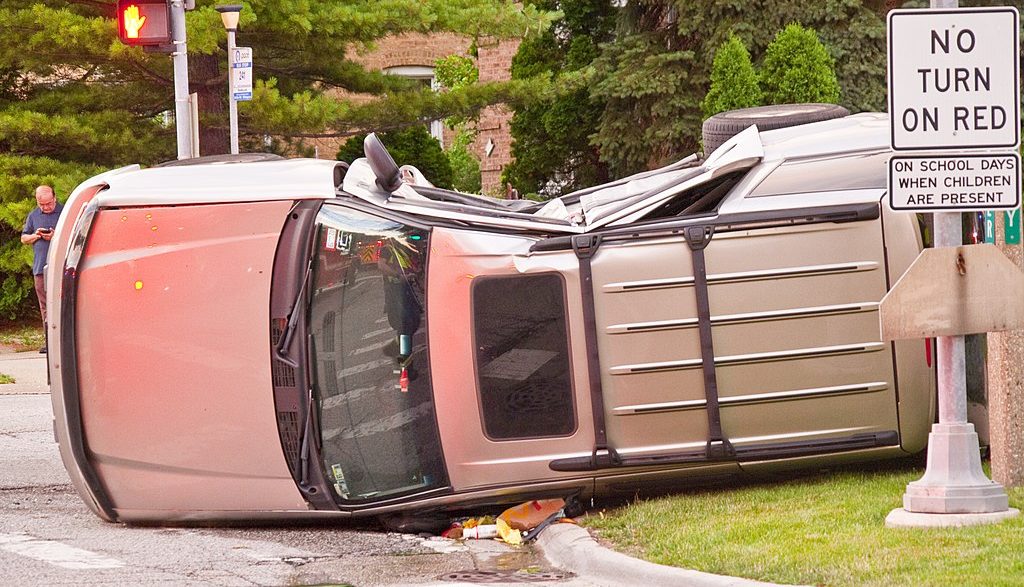Another year, another record for pedestrian and cyclist deaths — and another breezy social media post from transportation leaders that functionally erases the growing epidemic.
On Monday, the National Highway Traffic Safety Administration released both its final fatality numbers for 2022 and preliminary estimates for 2023, both of which reported modest declines in overall traffic deaths on U.S. roads (of 1.7 percent and 3.6 percent, respectively).
But in 2022, drivers had killed more cyclists (1,105) than they had in any single year in the entire history of the reporting system — and pedestrian deaths (7,522) were the highest since 1981.
The preliminary 2023 numbers, as usual, did not include estimates for vulnerable road user deaths at all, leaving advocates to wonder what bloody asterisks will eventually be placed on those stats.
A very long ways. Our roads could be as safe as our drinking water. Instead, we have the most deadly roads—by far—among peer nations. US roads are deadly for **everyone**, but especially young, healthy people and people on foot or bicycles which impose neither risks or costs. pic.twitter.com/dbC4RuLL1I
— Bella Chu (@bellachu10) April 1, 2024
To their credit, NHTSA officials did acknowledge that those deadly milestones were unacceptable — even if the social media graphic they used to promote the new report focused on the dip in overall deaths, rather than the increase in fatalities among the most vulnerable.
As part of its 2022 reporting, the agency noted that the decrease in vehicle occupant deaths and been "correspondingly" offset by an increase in the deaths of people outside cars, who constituted a stunning 36 precent of all fatalities in 2022. (In 1996, they comprised just 20 percent.) That's in part because hit-and-run crashes involving a pedestrian, which are far less survivable than if a driver remains on the scene to summon medical attention, surged by 4.6 percent in a single year.
Serious pedestrian injuries, meanwhile, spiked a shocking 11 percent.
New @NHTSAgov fatality data shows 1,105 bicyclist deaths in 2022
— Ken McLeod 🚴🚵🏃🚲 (@Kenmcld) April 2, 2024
That is up over 13% from 2021
That is the most bicyclist deaths ever recorded by the Fatality Analysis Reporting System (created in 1975)
We need to do better https://t.co/xWP814rKyt pic.twitter.com/OaRGk3xf2b
The only other road user group who reported any year-on-year increase in injuries was cyclists, who tied pedestrians with an 11-percent rise.
Cycling deaths, meanwhile, were not evenly spread among urban and rural areas, increasing 9 percent in the former since 2020 and 35 percent in the latter over the same period. The agency also noted that a stunning 24 percent of all cycling deaths were hit-and-runs, though it did not note how much that rate had changed over time. (25 percent of pedestrians who succumbed to their injuries were also left to die by the drivers who struck them.)
But, fatalities for pedestrians went up. Again. What are y'all doing about giant SUVs and pickup trucks with deadly, blunt front ends and ridiculous blind spots? What about speed limiting systems on new vehicles? pic.twitter.com/2urUJ9r3wo
— Anthony Cherolis (@acherolis) April 1, 2024
The national traffic violence epidemic is falling harder on the shoulders of some categories of car occupants, too. The number of people killed in large truck crashes, for instance, increased two percent in a year, even as regulators stall on mandating common-sense safety standards like advanced driver assistance systems, or even simple under-ride guards that can prevent other road users from being swept under a large truck's wheels. Some safety standards, like certain commercial driver's license testing requirements, are even up for a possible repeal.
"This is unacceptable," Tami Friedrich, board president for the Truck Safety Coalition, said in a statement. "I call on Secretary Buttigieg to take action and URGENTLY proceed with rulemaking to require the use of speed limiters and automatic emergency braking in large trucks as soon as possible. No one else needs to die because of bureaucratic inaction.” (Emphasis Friedrich's.)
Of course, as countless Vision Zero advocates believe, systemic interventions like these can prevent all road user deaths, especially when we expand our scope to address the many failures of our roadway infrastructure, policy and post-crash care. Until agencies pursue those solutions with urgency, though, America will remain stuck celebrating a handful of overall traffic safety wins, while masking the astonishing bloodshed that some road user groups are suffering behind the scenes.






